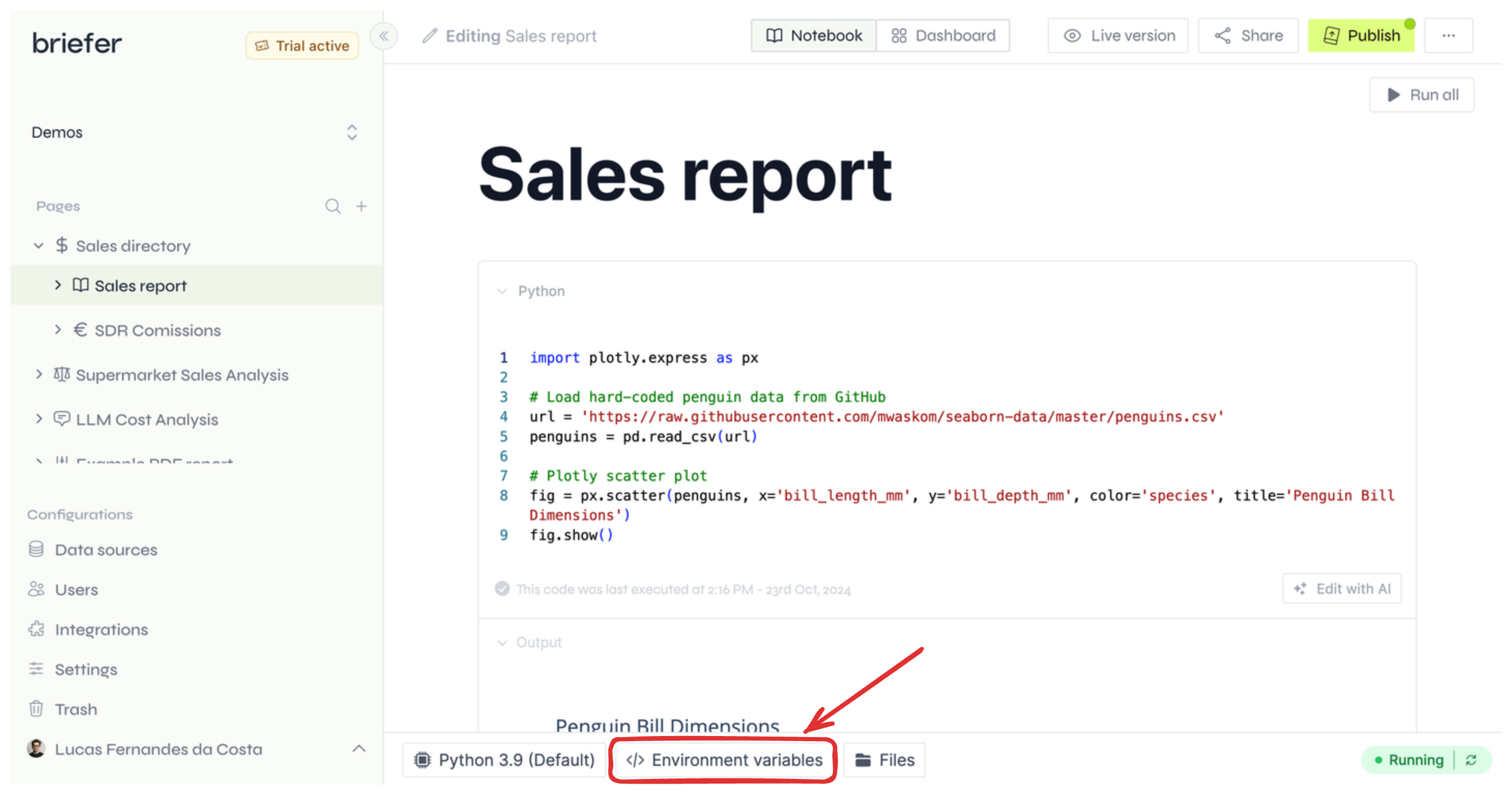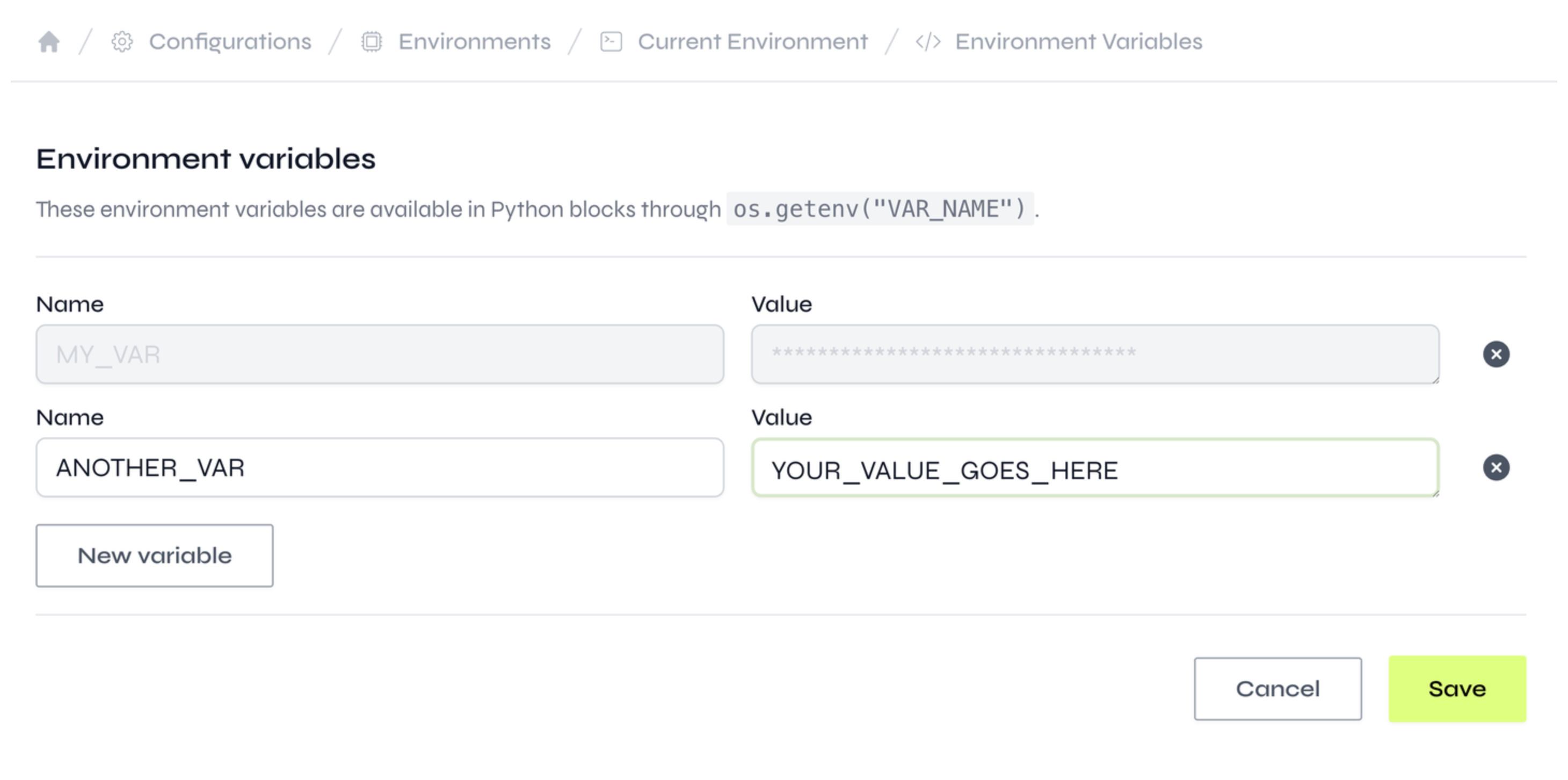
The environment variables button on the bottom bar.

The environment variables page.
os.environ dictionary.
Store keys, settings, and other values as environment variables that you can use.

The environment variables button on the bottom bar.

The environment variables page.
os.environ dictionary.